Typical Japanese Bread is a soft white bread used to make many kinds of Kashi Pan (sweet bread) such as An Pan and Melon Pan. Japanese people love the softness in bread so much that it’s almost fanatical. There are more rustic crusty breads around and they like those kinds too, however, they always go back to sweet soft bread that people are familiar with. Japanese Basic Bread has a hint of sweetness but not overly, so you can make it into either sweet or savory bread. Once you master this versatile bread, you will be able to enjoy all sorts of arrangements of Japanese bread.
Japanese Bread is heavily influenced by European bread just like Japanese western style sweets, but it has been altered to their liking over the last 100 years. Japanese soft bread made with milk and butter is so tender and light, and loved by everyone today. It is usually filled or topped with things like Anko (sweet red beans), custard cream, or many other tasty additions.
Kashi Pan is usually eaten for snacks or as a light meal for breakfast and lunch. There are bakeries in every corner in the cities in Japan, from a suburban residential area to a business park in downtown. They open very early in the morning and are ready to serve for even the earliest commuter. Because there are a lot of bakeries to buy freshly made tasty bread anywhere in Japan, people there might not need to make bread at home…. But not the case for the rest of us here! Bread making at home is time consuming, and yes, it may be a little finicky for beginners to get the right texture of the dough. The combination of ingredients, preparation, and baking conditions is tricky and it can definitely be frustrating at first. Watch the video for tips and keep trying! (For example, you can check if the bread dough has been kneaded enough when you can stretch the dough very thinly without breaking.) Fresh home-made warm bread is so good that it’s worth the effort. You may not feel the necessity of having those bakeries anymore… perhaps.
We simply sprinkled with sugar here, but you can fill or top with anything you like. Have fun and experiment with it!
Japanese Basic Bread Recipe
*Links may contain ad. #CommissionsEarned
Equipment
Ingredients
- 200 ml milk lukewarm
- 5 g active dry yeast
- 30 g sugar
- 240 g bread flour
- 60 g cake flour
- 5 g salt
- 10 g dry milk powder
- 30 g butter room temperature
- egg wash: 1 egg plus pinch of salt mixed well
- pearl sugar
Instructions
- Put lukewarm milk, yeast, and sugar in a stand mixer bowl, then whisk well. Let it sit for 5 minutes.
- Combine bread flour and cake flour, and add to the milk mixture. Add salt and milk powder, and start the mixer kneading with a dough hook at medium speed.
- When the dough is becoming a ball (after about 8 minutes), add soft butter and knead for another 4-5 minutes until the butter is completely incorporated. Cover with plastic, and leave in a warm place about 1 hour until the dough has doubled in size.
- Take the dough and push gently to deflate the gas from the dough. Put on to a cutting board, and cut into 8 equal pieces about 2.5oz (or 70g) each. Form into small balls. Let them rest for 15 minutes covered.
- Place shaped dough balls on a baking sheet lined with parchment paper, leaving 2″ (or 5cm) space between the balls. Brush egg wash (the mixture of egg with a pinch of salt) on the surface of the dough, and sprinkle some sugar on top. Leave them to double in size, about 1 hour.
- Bake in a preheated oven at 400F(205C) for about 9 minutes until they brown.
Video
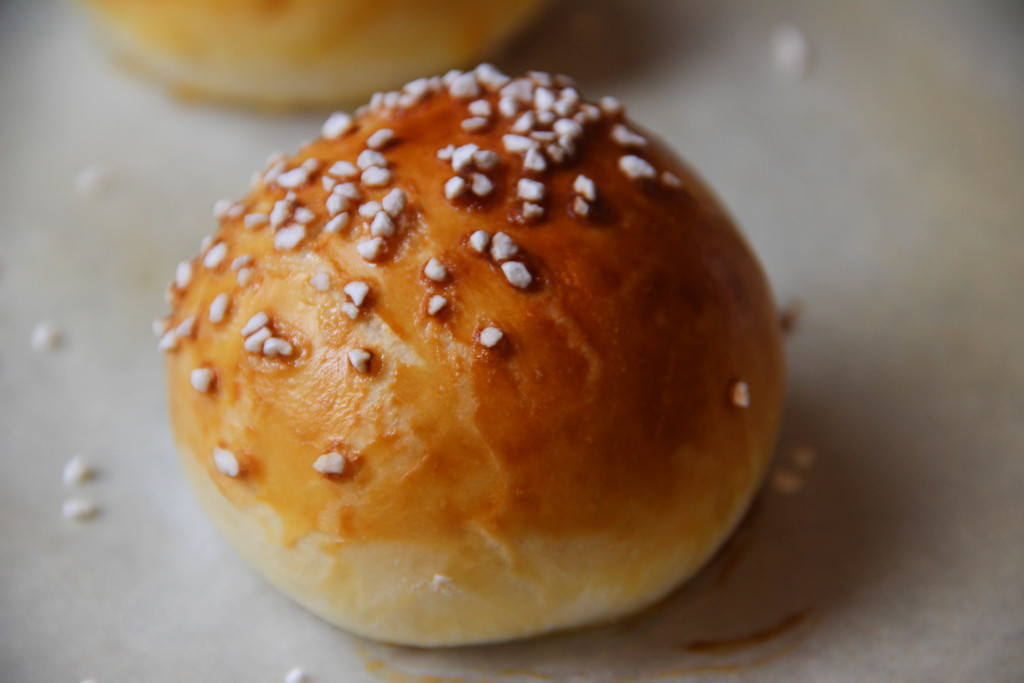

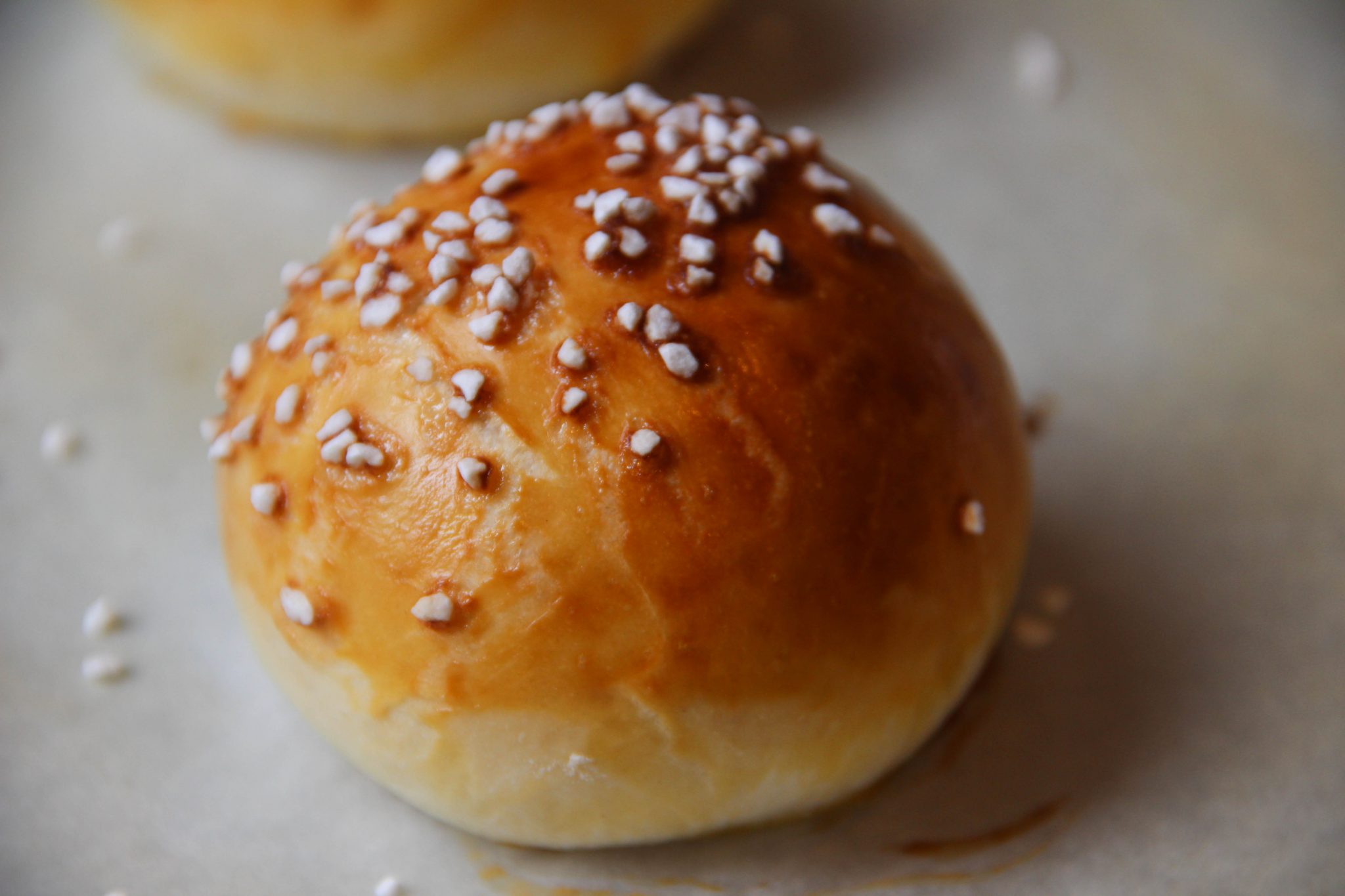
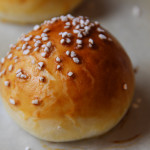
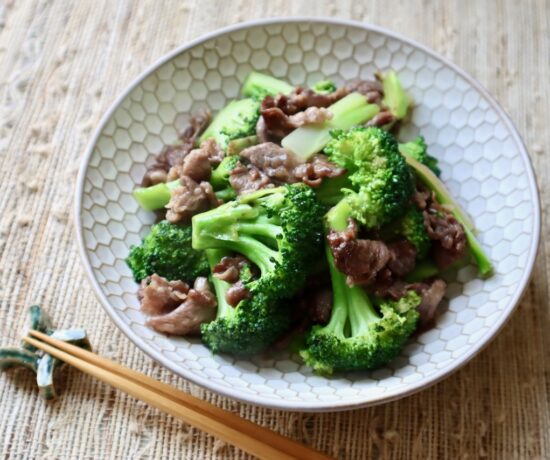
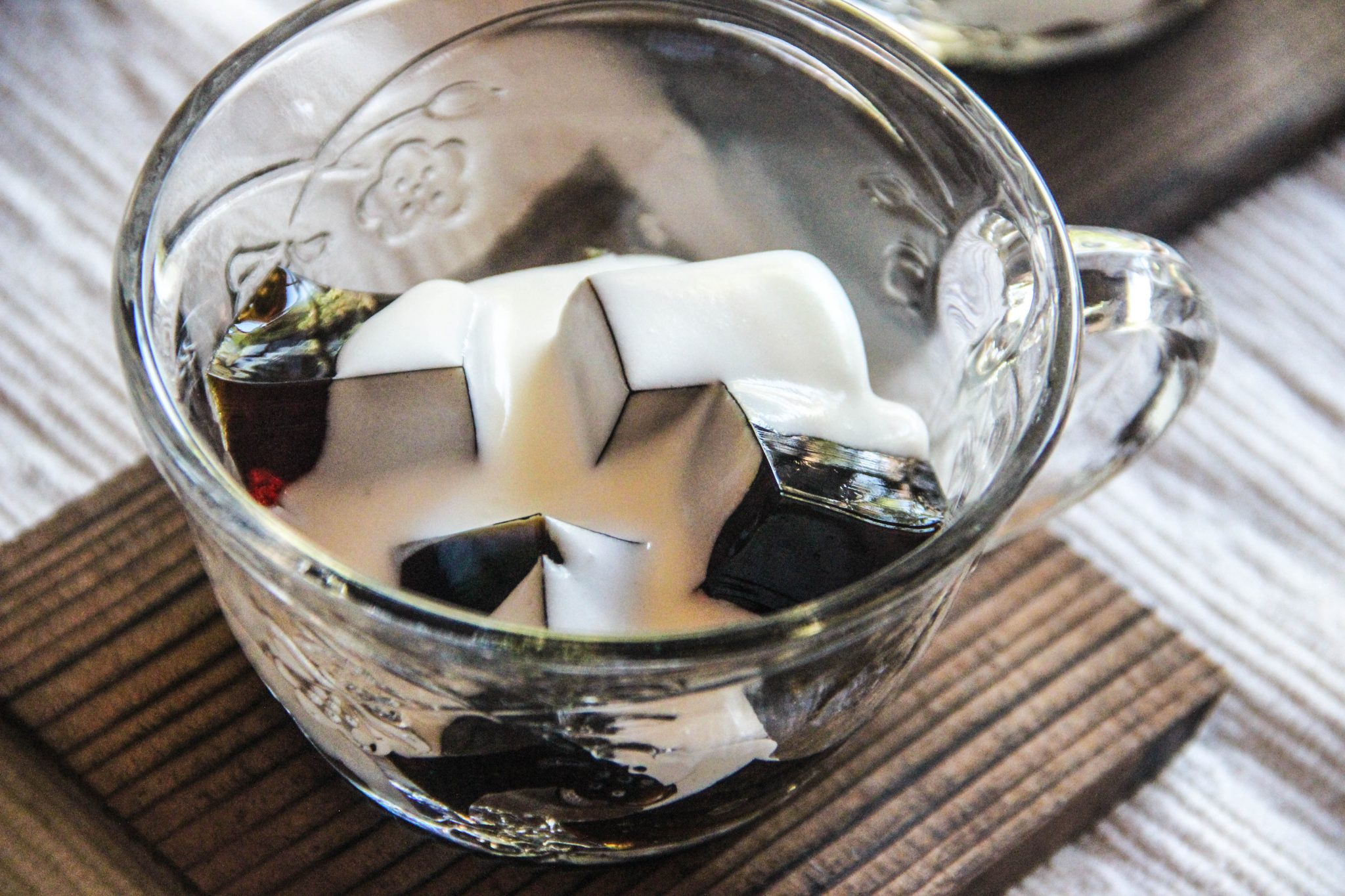

Shao
November 8, 2016 at 5:37 pmHi!
If I don’t have any dry milk powder, what can I used instead?
Thank you.